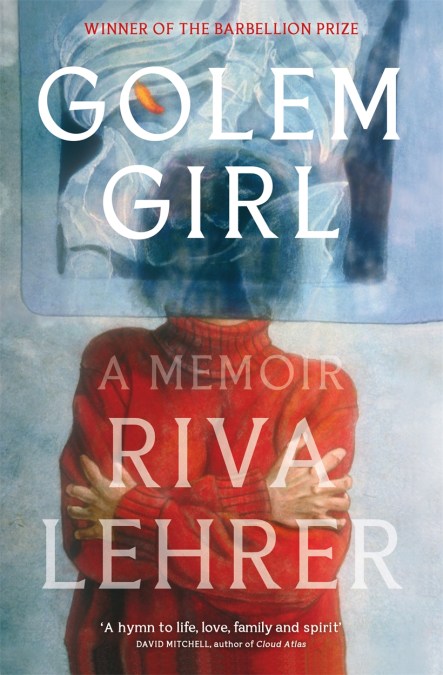Rabbi Sharon Kleinbaum: God Loves Queer People
By
Sharon Kleinbaum — 2014
YOU MIGHT ALSO LIKE
CLEAR ALL
BY TOPIC
BY TEACHER
BY TYPE
FILTER

TOPIC
- Coming Out (40)
- Gender Identity (36)
- Nonbinary Well-Being (34)
- BIPOC Well-Being (27)
- Homophobia (25)
- LGBTQIA Relationships (20)
- Sex (19)
- Athlete Well-Being (17)
- LGBTQIA Children (16)
- Family Acceptance (15)
- Activism/Service (14)
- Body Image (14)
- Christianity (14)
- Memoir (14)
- Gender Challenges (13)
- Intimacy (13)
- Romantic Relationships (13)
- Social Justice (13)
- The Divine (13)
- Authenticity (12)
- Black Well-Being (11)
- Women’s Well-Being (11)
- AIDS (10)
- Self-Expression (10)
- Gender and Spirituality (9)
- Gender Discrimination (9)
- Shame (9)
- Autism (8)
- Buddhism (8)
- Aging (7)
- Creative Well-Being (7)
- Faith (7)
- Identity (7)
- Judaism (7)
- Neurodiversity (7)
- Parenting (7)
- Reproductive Health (7)
- Self-Acceptance (7)
- Cross-Cultural Dynamics (6)
- Disabled Well-Being (6)
- Emotional and Mental Health (6)
- Gender Justice (6)
- Self-Love (6)
- Sexual Health (6)
- Speaking Your Truth (6)
- Young Adult Well-Being (6)
- Belonging (5)
- Discrimination (5)
- Faith and Identity (5)
- Latinx Well-Being (5)
- LGBTQIA Parents (5)
- Love (5)
- Masculine/Feminine Dynamics (5)
- Motherhood (5)
- Self-Care (5)
- Self-Esteem (5)
- Spiritual Life (5)
- AAPI Well-Being (4)
- Comparing Belief Traditions (4)
- Divorce and Breakup (4)
- Eating Disorders (4)
- Female Empowerment (4)
- Indigenous Well-Being (4)
- Inner Life (4)
- Physical Health (4)
- Racial Identity (4)
- Racism (4)
- Self-Discovery (4)
- Self-Worth (4)
- Spiritual Development (4)
- Trauma Healing (4)
- Body Positivity (3)
- Communication Skills (3)
- Cross-Cultural Parenting (3)
- Fellowship and Community (3)
- Grit (3)
- Islam (3)
- Marriage (3)
- Men’s Well-Being (3)
- Mindfulness (3)
- Mysticism (3)
- Offering Support to Others (3)
- Racial Justice (3)
- Raising Nonbinary Children (3)
- Religious Experience (3)
- Sexual Assault or Abuse (3)
- Spiritual Direction (3)
- Spirituality and Politics (3)
- Yoga (3)
- Addiction (2)
- Anger (2)
- Caregiver Well-Being (2)
- Challenges with Teens (2)
- Christian Mysticism (2)
- Community Healing (2)
- Conscious Evolution (2)
- Consciousness (2)
- Courage (2)
- Fiction (2)
- Gender Transition (2)
- Illness and Injury (2)
- Massage (2)
- Mind-Body Connection (2)
- Mindfulness Practices (2)
- Passion (2)
- Prayer (2)
- Psychology (2)
- Race and Gender (2)
- Racial Discrimination (2)
- Relationship Challenges (2)
- Science and Spirituality (2)
- Self-Actualization (2)
- Self-Compassion (2)
- Self-Realization (2)
- Spiritual Awakening (2)
- Spiritual Growth (2)
- Spiritual Quest (2)
- Taoism (2)
- Transformation (2)
- Veteran Well-Being (2)
- Vulnerability (2)
- Acupressure (1)
- Addiction Recovery (1)
- Awareness (1)
- Buddha Nature (1)
- Bulimia (1)
- Bullying (1)
- Cancer (1)
- Channeling (1)
- Child’s Trauma (1)
- Children’s Well-Being (1)
- Clairvoyance and Precognition (1)
- Cognitive Behavioral Therapy (1)
- Collaboration (1)
- Depression (1)
- Digital Life (1)
- Disconnection (1)
- Divination Systems (1)
- Emotional Intelligence (EQ) (1)
- Empowerment (1)
- Enlightenment (1)
- Family Dynamics (1)
- Feminism (1)
- Finding Meaning (1)
- Forgiveness (1)
- Goal Setting (1)
- Handling a Loved One’s Illness (1)
- Hope (1)
- Humility (1)
- Identity Shifts (1)
- Imagination and Creativity (1)
- Immigration and Assimilation (1)
- Imposter Syndrome (1)
- Inspiration (1)
- Internal Family Systems (1)
- Intuition (1)
- Joy (1)
- Leadership (1)
- Meditation (1)
- Mediums (1)
- Mentoring (1)
- Midlife Crisis (1)
- Mindfulness Meditation (1)
- Moral Philosophy (1)
- Native American Beliefs (1)
- Non-Duality (1)
- Obsessions/Compulsions (1)
- Other Dimensions and Beings (1)
- Othering (1)
- Paganism (1)
- Past Lives and Reincarnation (1)
- Philosophical Approaches (1)
- Pleasing Parents (1)
- Poetry (1)
- Pregnancy and Childbirth (1)
- Presence (1)
- Psychoanalysis (1)
- Qigong (1)
- Quantum Physics (1)
- Racial Healing (1)
- Reflexology (1)
- Resilience (1)
- Runes (1)
- Sacred Feminine (1)
- Self-Development (1)
- Self-Limiting Beliefs (1)
- Self-Reflection Practices (1)
- Setting Limits and Boundaries (1)
- Social Media Addiction (1)
- Social Presence (1)
- Social Psychology (1)
- Social Responsibility (1)
- Soul Mission (1)
- Spiritual Healing (1)
- Spiritual Practices (1)
- Suicide (1)
- Traditional Chinese Medicine (1)
- Unconscious Bias (1)
- Visions and Hallucinations (1)
- Well-Being (1)
- Western Astrology (1)
- Whiteness (1)
- Women’s Rights (1)
- Work Challenges (1)
- Yin/Yang (1)
- Youth Activism (1)
FILTER

TEACHER
- Moses (3)
- C. S. Lewis (2)
- Howard Thurman (2)
- James Martin (2)
- La Sarmiento (2)
- Lama Rod Owens (2)
- Larry Yang (2)
- Mantak Chia (2)
- Meher Baba (2)
- Nadia Bolz-Weber (2)
- Riane Eisler (2)
- Sharon Kleinbaum (2)
- Abraham Joshua Heschel (1)
- Acharya Shunya (1)
- Albert Einstein (1)
- Alok Vaid-Menon (1)
- amina wadud (1)
- Amit Goswami (1)
- Andrew Solomon (1)
- angel Kyodo williams (1)
- Anthony de Mello (1)
- Audre Lorde (1)
- Camille Helminski (1)
- Carl Jung (1)
- Colin Bedell (1)
- Cynthia Bourgeault (1)
- Elaine Pagels (1)
- Elisabeth Haich (1)
- Ellen Bass (1)
- Evelyn Underhill (1)
- Ilia Delio (1)
- Jane Hirshfield (1)
- John Perry (1)
- Jonathan Van Ness (1)
- Karen Armstrong (1)
- Kathryn Budig (1)
- Lindo Bacon (1)
- Marianne Williamson (1)
- Martin Buber (1)
- Matthew Fox (1)
- Raymond Buckland (1)
- René Rivera (1)
- Rob Bell (1)
- Robert Firestone (1)
- Rupert Sheldrake (1)
- Saeed Jones (1)
- Sigmund Freud (1)








